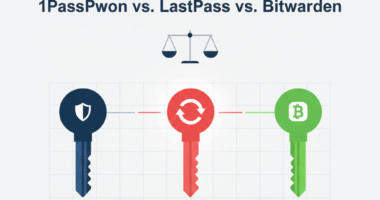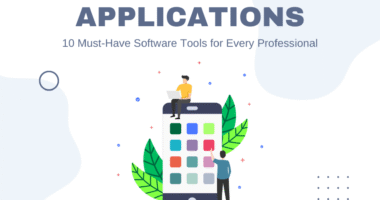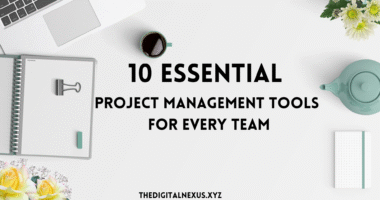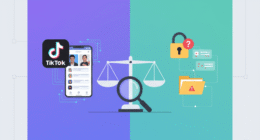In today’s hyper-digital landscape, software isn’t just a tool; it’s the very bedrock of productivity, creativity, and connection. From streamlining complex business operations to fueling personal passions, the right application can elevate your experience, while the wrong one can plunge you into a quagmire of frustration and wasted resources. But with an ocean of options, how does one discern the digital wheat from the chaff? This isn’t merely about feature checklists; it’s a nuanced journey of self-assessment, strategic foresight, and meticulous evaluation. Ditching the superficial skim, we’ll delve into a robust methodology for selecting software that genuinely fits, rather than merely functions.
1. The Probing Pause: Beyond Features, Define Your “Why”
Before you even glance at a single software review or demo video, initiate a critical self-interrogation. Most people leap straight into comparing features, a fundamentally flawed approach that often leads to over-engineered solutions or, conversely, tools that fall short in unexpected ways. The pivotal starting point is to precisely articulate the problem you’re trying to solve, or the opportunity you’re aiming to seize.
Unpacking Your Core Challenge
Ask yourself: What specific pain points currently exist? Is it a bottleneck in workflow, a lack of data visibility, an inability to collaborate effectively, or simply a desire for a more intuitive creative outlet? Don’t just list symptoms; dig for the root cause. For a business, this might involve mapping out current processes to pinpoint inefficiencies. For personal use, it could be recognizing why your current photo editor consistently frustrates you.
Furthermore, consider the impact of choosing the right (or wrong) software. What are the tangible benefits you expect to gain? Savings in time or money? Improved accuracy? Enhanced creativity? Increased customer satisfaction? A clear understanding of your “why” acts as an anchor, guiding all subsequent decisions and preventing you from being swayed by flashy, yet irrelevant, functionalities. This introspective phase is arguably the most human part of the process – requiring empathy for your own needs or the needs of your team, and a clarity of purpose that no algorithm can replicate.
2. The Ecosystem Audit: Compatibility and Integration are King
Individual software solutions rarely operate in a vacuum. They are components within a larger digital ecosystem that you already inhabit. Neglecting how a new piece of software will interact with your existing tools is akin to buying a vital car part without checking if it fits your specific make and model. Integration isn’t a luxury; it’s a non-negotiable requirement for seamless operation and data flow.
Mapping Your Digital Landscape
Inventory your current software stack. Are you on Windows, macOS, Linux, or a blend? Which productivity suites do you use (Microsoft 365, Google Workspace, Adobe Creative Cloud)? What are your existing communication platforms (Slack, Teams)? Your new software must play nicely with these established players. Look for native integrations, robust APIs (Application Programming Interfaces) for custom connections, or at the very least, easy data export/import options.
Think about data transfer. Will the new software need to pull information from your CRM, accounting software, or project management tool? Will it need to push data back? Avoid manual data entry where possible; it’s a breeding ground for errors and a drain on resources. The goal is to create a harmonized environment where information flows freely and effortlessly between applications, rather than becoming trapped in digital silos. This foresight ensures that your new digital addition doesn’t become another headache, but rather a synergistic enhancement.
3. Beyond the Price Tag: Total Cost of Ownership (TCO) and Scalability
The sticker price or monthly subscription fee is just the tip of the iceberg when it comes to software costs. A truly astute decision-maker considers the Total Cost of Ownership (TCO) and how the software will accommodate future growth and evolving requirements. Short-sighted savings can quickly transform into long-term liabilities.
Unveiling Hidden Expenses and Future-Proofing
TCO encompasses far more than just licensing. Factor in:
- Implementation Costs: Setup, configuration, data migration.
- Training: Time and resources required for users to become proficient.
- Maintenance & Support: Annual fees, premium support plans, potential IT staff time.
- Hardware Upgrades: Does the new software demand more powerful machines?
- Integration Costs: Fees for connectors or custom development.
- Downtime Costs: What is the cost if the software fails or requires extended maintenance?
Equally vital is scalability. Will the software grow with you? If your team expands from 5 to 50, or your data volume explodes, can the software handle it without a complete overhaul? Look for flexible pricing tiers, cloud-based architectures, and modular designs that allow you to add features or capacity as needed. A solution that feels perfect for your current size might become a straitjacket as you expand. Choosing software with an eye on the horizon ensures longevity and avoids the costly and disruptive process of migration down the line. This forward-thinking approach is what separates a transient fix from a strategic asset.
4. The Human Element: Usability, Support, and Community
No matter how powerful or feature-rich a piece of software is, its value plummets if people can’t or won’t use it effectively. The “human-computer interaction” aspect is often underestimated, yet it directly impacts adoption rates, training overhead, and overall satisfaction.
Prioritizing the User Experience (UX)
An intuitive User Interface (UI) and seamless User Experience (UX) are paramount. Is the learning curve manageable? Are common tasks easy to accomplish? Do critical functionalities require excessive clicks or obscure navigation? Don’t just read about the UI; actively engage with demos, free trials, or sandbox environments. Involve actual end-users in this evaluation – their perspective is invaluable. A technically superior solution that bewilders its users is, in practice, inferior.
Beyond the interface, evaluate the robustness of support and the vibrancy of the community. What are the available support channels (email, chat, phone)? What are the response times? Is there a comprehensive knowledge base, tutorials, or active user forums? A strong community can provide crowdsourced solutions, tips, and best practices that even premium support might miss. This collective wisdom acts as a safety net, ensuring that when you inevitably encounter a hiccup or seek a creative workaround, you have resources at your fingertips. The presence of a helpful human support network, and a community of peers, transforms a solitary software experience into a collaborative journey.
5. The Security Stance: Safeguarding Your Digital Frontier
In an age of persistent cyber threats, the security posture of any software you adopt is not merely a technical specification, but a fundamental ethical and operational imperative. Overlooking this aspect is akin to leaving your front door unlocked – an invitation to potentially catastrophic consequences.
Scrutinizing Data Protection Protocols
Before committing, meticulously investigate the software vendor’s security protocols. This extends beyond basic password protection. Inquire about:
- Data Encryption: Is data encrypted both in transit (when it moves between your device and their servers) and at rest (when it sits on their servers)?
- Compliance: Does the software comply with relevant industry regulations (e.g., GDPR, HIPAA, ISO 27001)? This is particularly critical for businesses handling sensitive customer or financial data.
- Access Controls: How granular are the user permissions? Can you restrict who sees and modifies what information?
- Vulnerability Management: What is their process for identifying and patching security vulnerabilities? Do they conduct regular security audits or penetration testing?
- Backup and Disaster Recovery: What measures are in place to prevent data loss and ensure business continuity in the event of a system failure or cyberattack?
A reputable vendor will be transparent about their security practices and happy to provide documentation or answer detailed questions. Prioritize software that demonstrates a proactive and robust approach to data protection. Remember, your data, and potentially your customers’ data, will reside within this application. Entrusting it to a vendor with lax security is a gamble no one should take. A secure foundation is the non-negotiable prerequisite for peace of mind in our interconnected world.







